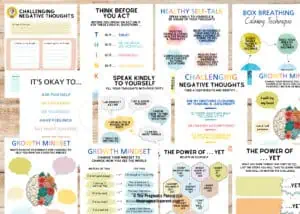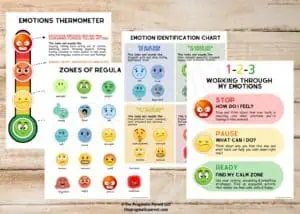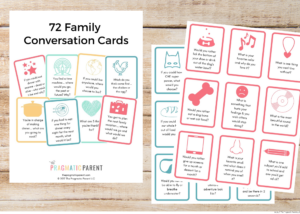Are you exhausted trying to figure out toddler sleep problems? Toddler Sleep is complex and growth, development, family dynamics all play a part in how your toddler sleeps – good or bad. Solutions to help your toddler sleep again. Fix Waking Up in the Middle of the Night, Waking Up Early, Fighting Bedtime & Resisting Naps. Solutions to help your toddler sleep again.

Common Toddler Sleep Problems & Solutions o Help Your Toddler Sleep Again
No matter what you try, nothing seems to be working because your toddler is still waking in the night, struggling with bedtime or even pushing naps. It’s hard, it’s frustrating and it’s exhausting for the – and for Mom and Dad too! But like with any problem, you must figure out why something is happening before you can fix it.
Learn what’s standing in the way of a good night’s sleep, common toddler sleep problems and how to fix them.
1. STALLING AT BEDTIME
How many times after your children go to bed do they ask to use the potty one more time, another glass of water, they have an itchy nose or just need to tell you “something important.” This is stalling behavior and kids are professionals at it! Stalling behavior is tied into not wanting to miss out on the fun stuff. The bedroom is a quiet, calm, dark place and that’s no fun when playtime could be had!
2. OVERTIRED KIDS FIGHT BEDTIME
Toddlers who miss naps or don’t get enough sleep in the middle of the day turn into overtired bedtime fighters.
Naptime transitions can be a rough period of time for kids and parents! Toddlers begin to transition from two naps down to one around a year and a half and eventually give up naps all together between 3 and 4 years of age.
Transition periods can throw off moods and affect bedtimes when toddlers shorten their naps, take them late or skip them all together. This all leads to overtired, cranky, and fussy children who fight off bedtime or stir up drama when it’s time to go to bed.
3. SEPARATION ANXIETY & FEAR OF MISSING OUT
There are two types of separation anxiety – the kind that strikes around 8 – 10 months right around the time of the 8 month sleep regression and then again at 18 months out of a genuine fear of being away from a parent or loved one and the kind where your kids fear they’re missing out on what goes on after they go to bed.
Separation anxiety is perfectly normal and shows that your baby has a strong attachment to one parent or the other. In fact, separation is a good and healthy sign, but at bedtime, separation anxiety can cause extra clinginess and peak crying – not good. This is the most common reason behind separation anxiety around 8 months and one of the biggest factors leading to the 8 month sleep regression.
They’re also developing object permanence – once something leaves out of sight, it will come back but before they can learn this, they’ll be frightened that once you step out of the bedroom at nap or night, it feels like you’ll never come back.
At 18 months when the second period of separation anxiety strikes , this can be a major factor leading to the 18-month sleep regression, a major sleep regression that can flip your toddler’s sleep upside down.
Kids also commonly hit the last regression known as the 2 year old sleep regression.
Some strategies that help with separation anxiety and toddler sleep regression:
- Stick to a solid routine – consistency is key!
- Don’t try to sneak away at night – be firm in your goodbye and reassurance that you love them and will be back in the morning
- Don’t show a reaction – anxious, anger, frustration – this can make your baby’s emotions even worse
- Offer a lovey – something they can hold and snuggle with for comfort
- It’s good to offer comfort – but don’t let them rely on you. Keep your comfort at bedtime and in the middle of the night, short, silent and boring. Once you’ve taken a moment to soothe them, then leave the room and don’t linger.
Download Your Routine Tracker – The Starting Place for Creating a Better Routine and Great Sleep Habits
Kids who don’t want to go to sleep because they fear they’re missing out on more after-bed playtime need to be reassured that no dance parties and ice cream sundaes happen after you’ve put the kids to bed. And if they do, a little smudging of the truth won’t hurt.
Reassure your kids that after they go to bed, Mom and Dad are doing boring adult things like folding laundry, cleaning the house and scrubbing the floor with a teeny tiny toothbrush and soon enough they’ll be asleep because no child wants to do extra chores late at night.
4. HUNGER PANGS AT BEDTIME
We’ve all be here, our son or daughter is eating more than normal and asking for a second helping and extra snacks for weeks on end. Growth spurts don’t just happen during the day, they happen all day long and hunger can strike before bedtime and in the middle of the night too.
Your child is growing and burning through calories and need extra fuel to fill up. Here are a couple solutions to curb nighttime hunger.
- Offer a snack high in protein before bed – apples with peanut butter, protein bar, nuts – but only when your child is extra hungry as not to set them up for a bad habit
- Push dinnertime back a little so it’s closer to bed. If you have dinner at 5:30, and bedtime at 8:30, the three hours in between may be too big of a space.
- Be sure food offerings without stimulants – aim for low in sugar and caffeine
5. JUMPING IN & OUT OF BED
Without talking or turning on the lights (avoid stimulating sights, sounds and this includes conversation), silently tuck your child back into their bed. Try your best to not show any emotion and don’t converse.
If you give them a reaction whether loving or upset, they’ll quickly learn that by getting in and out of bed, you’ll keep coming back and engaging with them. When you don’t give them a reaction, you aren’t feeding their attention and less likely to keep repeating the behavior.
If you have play items in their bedroom, remove them or tuck them in the closet so there isn’t temptation to get out of bed and play.
6. NIGHT TIME FEARS MAKE GOING TO BED SCARY
Right around age two, children’s fears begin to show themselves, particularly at bedtime. Nighttime fears such as monsters, dark rooms, things under the bed and other scary thoughts feel very real, especially when the lights go off.
While it’s easy to want to reassure your child there is nothing hiding in the closet and because you know the fear is unfounded and irrational, to them, it isn’t. You can’t sweep fears under the rug without expecting them to keep resurfacing.
Be patient and empathetic towards their feelings, ask why they are afraid and often you’ll find the cause of where it originated. It could be a show, a book, a movie or another child who planted the fear. When your child sees for themselves – and deducts on their own – where the fear came from, only then can they rationalize it to overcome it.
In the meantime, a nightlight and comfort items in the bed to snuggle with can help ease nighttime fears and anxiety.
Recommended Books to Help Kids With Bedtime Fears:
7. TODDLERS WHO HAVE TOO MUCH ENERGY & AREN’T READY FOR BED
If your kids aren’t falling asleep within 15 minutes of laying down, and still have energy to burn, it might be time to reevaluate a couple things. Children who are wide awake at bedtime and are still young enough to nap during the day may be napping too long or too late to bedtime. Aim for five to six hours between naptime wake up and starting your bedtime routine so they’re not too energized or overtired. You can also shorten naps aiming for 1 – 1.5 hours. Anything over 2 hours might be too long, depending on their age.
In the afternoon, get outside and run around to burn off energy and give them the physical activity little bodies need to wear themselves out.
Lastly, it may be time to evaluate if the bedtime you have set is too early. Depending on what time your children wake up in the morning, they could be going to bed too early before they are tired.
Here is a helpful baby awake time chart gives you more details on the number of hours your child needs based on age.
8. WAKE UP TIME AFFECTS BEDTIME
Children who are waking up too early, will be affected all day long and especially at nighttime when they’re overtired. You can translate bedtime battles based on early wake-up times in these areas that may need adjustment:
- Toddlers don’t need to nap as long (too much sleep during the day means they’ll need less nighttime sleep. This translates into early wake-up times.)
- The room isn’t dark enough and lets in too much light during the early morning hours (black-out curtains are a lifesaver!)
- Children’s bedtime and alarm clocks help kids recognize when it’s OK to wake up and get out of bed, or otherwise go back to sleep and stay in bed
More tips on helping a child who is waking up too early can be read in this article.
Get a copy of the Master Routines & Schedules Ebook with suggestions (with times or without times) for newborns through preschool aged children. (Plus 70 pages jam-packed with good info on sleep, routines and all things little kids!)
Parents and caregivers, keep faith. This phase will not last forever. Consistency and patience will get you on the right track – and back to sleeping – in no time!
Download Your Routine Tracker – The Starting Place for Creating a Better Routine and Great Sleep Habits
Need a little extra help starting or adjusting your daily routine? Here’s a FREE Course that will help you take control & bring more peace to your home.
Additional Reading on Toddler Sleep
- 7 Ways to Beat Bedtime Stalling with Young Kids
- Is Your Kid Waking Up Too Early? How to Fix It
- 10 Helpful Ways to Calm the Kid Who Fights Bedtime
- Toddler Sleep Regressions: What You Need to Know About Your Two Year Old’s Sleep
- How to Establish a Peaceful Bedtime Routine for Your Baby
- How to Survive the 18 Month Sleep Regression & 2 Year Sleep Regressions Without Going Crazy
- Comprehensive Sleep Charts & Sleep Guidelines for Infants Through Adolescents
- The Benefits of Having a Daily Routine
- Create an Awesome Routine for Better Sleep Habits










Tiff says
I loved this! I have two littles and my daughter is a champ at sleeping my son not so much he is 16 months and still has never “slept” through the night. You gave me some things to think about, thanks!
Corinne says
You’re welcome, I hope some of these methods work to get you back on track to sleeping!
Caterina says
These are really great ideas. I really like some of your tips. I have one daughter.I’m gonna try it on my baby. I will appreciate these tips for new parents. Thank you for your great blog.